Drainage device in a washing machine
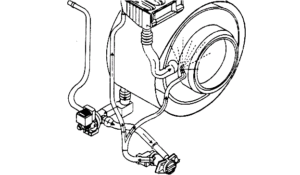 An automatic machine cannot operate without a drainage system. After each stage of the cycle, it is necessary to remove soapy water from the tank, which is what the pump does. The liquid “passes” through the pipes and filter, and only then enters the sewer. If the washing machine suddenly cannot pump water out of the tank, you will have to check a number of elements. We'll tell you how the drainage system in a washing machine works. Let's figure out how to fix the “home assistant” that refuses to empty the drum.
An automatic machine cannot operate without a drainage system. After each stage of the cycle, it is necessary to remove soapy water from the tank, which is what the pump does. The liquid “passes” through the pipes and filter, and only then enters the sewer. If the washing machine suddenly cannot pump water out of the tank, you will have to check a number of elements. We'll tell you how the drainage system in a washing machine works. Let's figure out how to fix the “home assistant” that refuses to empty the drum.
Elements of the water removal system
In fact, the drainage system is simple. If problems arise with the drain, it will not be difficult for the user to check the machine independently and find the “weak spot”. Let us tell you what elements the node consists of. The following is responsible for the normal drainage of water from the tank of any automatic machine:
- drain pipe;
- water pump;
- garbage filter;
- drain hose.
The first in the path of waste water is the drain pipe. It connects the tank to the pump. At the beginning of the corrugation there is a thickening - here there is a plastic ball that acts as a check valve. The purpose of the “ball” is to prevent unpleasant odors and sewage from getting into the washing machine.
The main element of the drainage system is a pump, which consists of a working chamber and an electric motor.
The working chamber of the pump is plastic, with pipes connected to it. The process of pumping waste liquid is carried out in the housing. A garbage filter is inserted at the end of the element - it protects the pumping station from foreign objects. The pump engine has a pair of cores. There is also a winding here. The rotor rotates inside, and the impeller is fixed on it.All components of the pump are “hidden” in a plastic shell. The terminals for connecting the wiring are brought out.
If we talk about the normal voltage of the SMA pump, it is 220 V. The power of the pump, depending on the model of the machine, varies from 30 to 80 Watts. As for the windings, they can be made of copper or aluminum. Power to the element is supplied by the main control module.
The operating principle of the pumping station is simple. The pump is installed below the tank level, so there is always water in the working chamber. When the module supplies voltage, the motor wheel is set in motion. A vacuum is formed in the supply tube, and pressure is formed in the inlet tube. This results in liquid being pumped out of the tank.
Finally, the water flows into the drain hose. One end of it is connected to the working chamber of the pump, the other to the outlet point of the sewer pipe. It is important to connect the drain hose correctly - it should be located at a distance of 50-70 cm from the floor level. If you neglect this rule, water will flow out of the tank by gravity.
How to check and replace the pump?
After several years of use, the washing machine may develop problems with draining. Often the elements of the drain system become clogged. A simple cleaning helps to restore the machine’s functionality. Breakdowns also happen. So, the pump may burn out, the pipe may crack. In this case, replacement of elements will be required. To find and fix the problem, you will have to check all components of the drain system.
You can get to the drainage system through the service hatch or the lower decorative panel of the housing.
You can open the door or remove the false panel using a screwdriver. It is necessary to pry off the cover and deal with the latches. Afterwards, the garbage filter and part of the drain pump are inspected.The algorithm of actions will be as follows: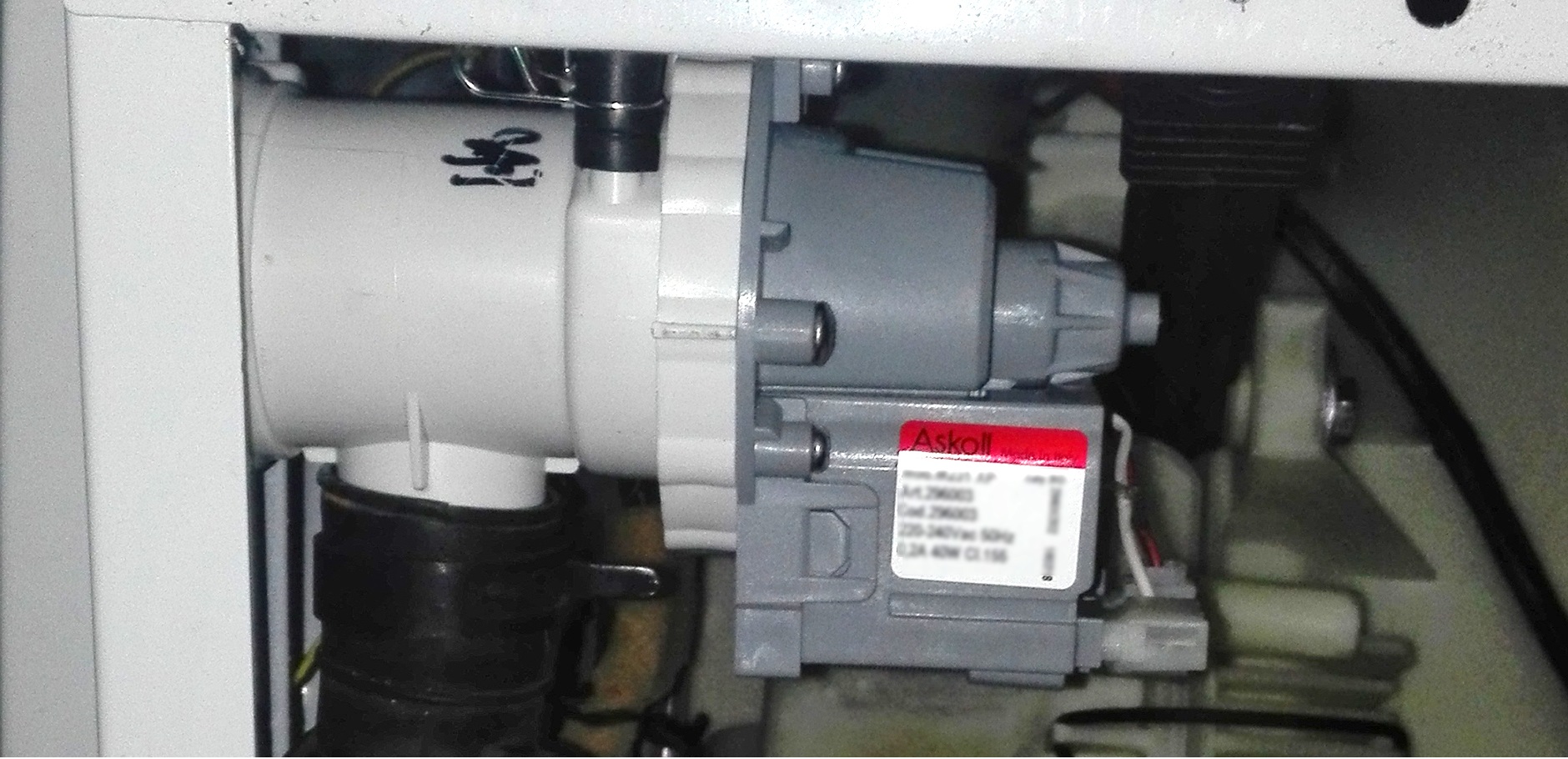
- turn off the power to the washing machine;
- close the valve responsible for the water supply;
- open the hatch or remove the lower decorative panel;
- find the garbage filter;
- Cover the floor around the machine with dry rags, place a low container under the washing machine, in the area where the filter is located;
- Unscrew the trash can plug half a turn. Please note that water will flow out of the hole;
- rinse the drain filter, clean the seat from dirt;
- shine a flashlight into the hole formed - this way you can see the pump impeller;
- remove any debris from the blades;
- Using a long stick, try to spin the impeller - it should move intermittently, but freely.
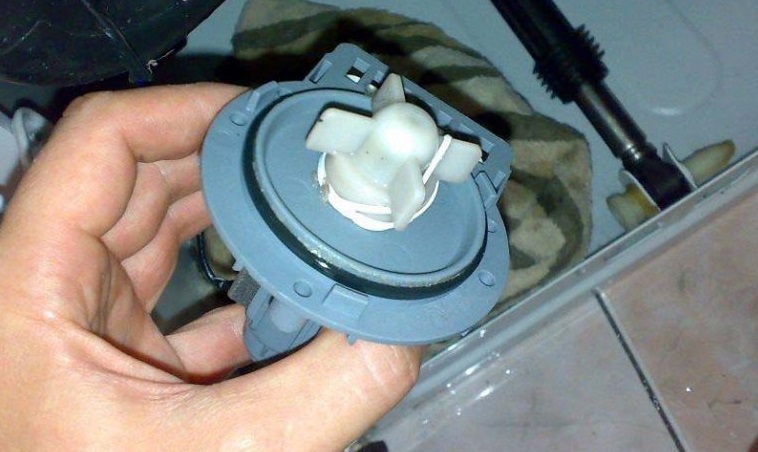
If the impeller is difficult to move, there is probably a foreign object stuck between the impeller blades. To clean the element, you will have to remove the pump from the housing. This is done as follows:
- Place the machine on its left side. It is better to cover the floor with something soft first;
- if there is a bottom, unscrew the fasteners and remove it;
- find the pump - it is located immediately under the tank.
Before dismantling the pump, it is recommended to check it. Pump diagnostics can be performed using a multimeter. To do this, you need to attach the tester probes to the contacts of the element, set the reading to 700 V on the device, turn on the machine and start the “Drain” mode. After a couple of minutes, you should evaluate the multimeter readings. If the pump does not hum at a voltage of 220 volts, we can talk about its malfunction.
The pump is not repaired; the element will need to be replaced.
To remove the pump, you need to disconnect the pipes and wiring from it, unscrew the bolts holding the pump and remove the element.The new part is fixed in place with self-tapping screws, and the previously discarded chips and hoses are connected to it.
Replacing the drain hose
Sometimes it may be necessary to replace the drain hose of the machine. The work is quite simple, even a beginner can handle it. The algorithm of actions will be as follows:
- de-energize the SMA, disconnect it from communications;
- drain the remaining water from the system through a garbage filter;
- move the washing machine away from the wall;
- tilt the machine body to gain free access to its bottom;
- find the place where the hose is fixed on the pump;
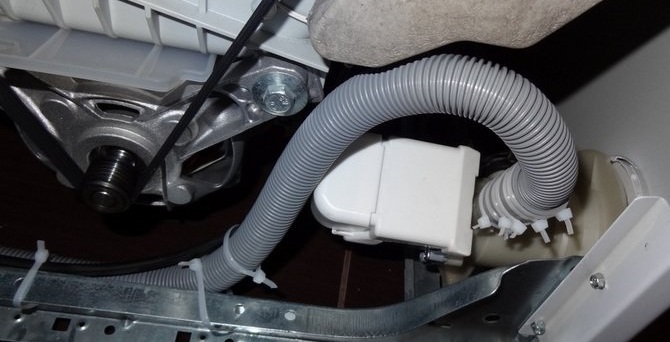
- loosen the clamp;
- disconnect the corrugation from the body;
- fix the new hose on the pump, secure it with a clamp;
- connect the corrugation to the body;
- put the machine back in place.
To make sure the replacement is done correctly, run a test wash with the drum empty. Wait until the machine starts draining water. Check that there are no leaks. If drops appear at the joints or the corrugation itself, complete the cycle and tighten the clamps further.
Interesting:
Reader comments
- Share your opinion - leave a comment
Categories
Washing machine repair


For buyers

For users

Dishwasher

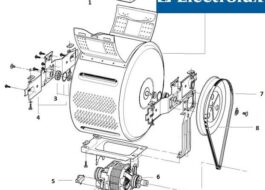
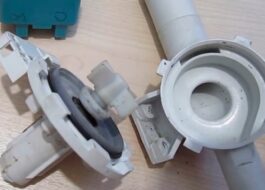
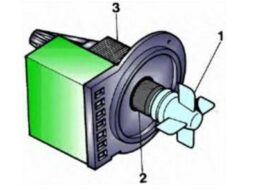

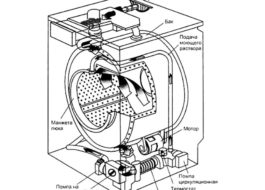
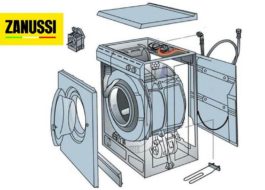










Add a comment